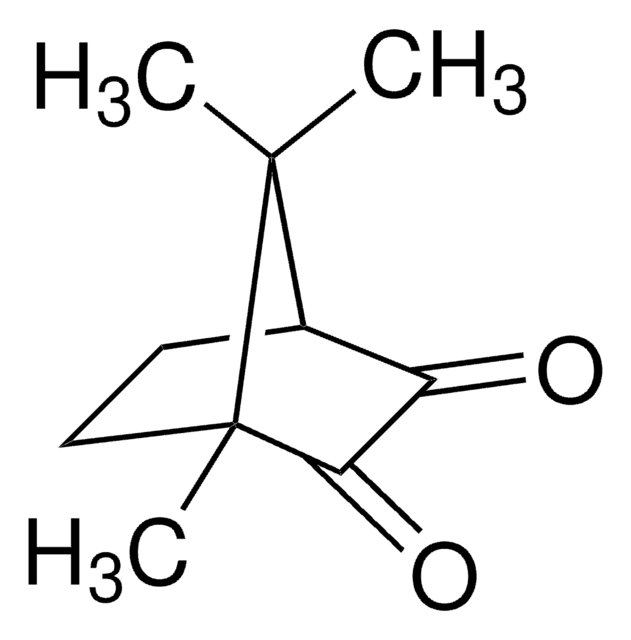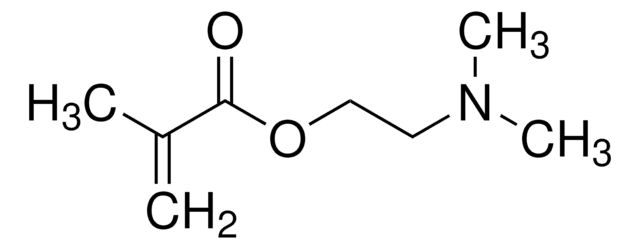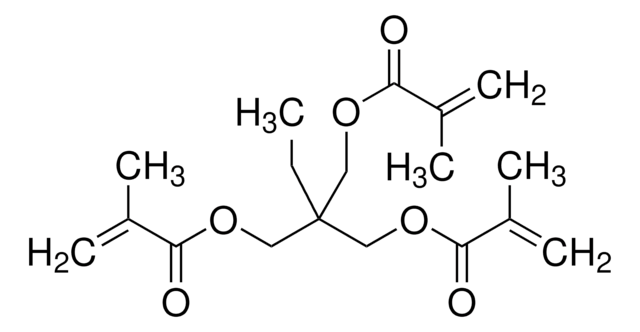261548
トリエチレングリコールジメタクリラート
95%, cross-linking reagent polymerization reactions, methacrylate, 80-120 ppm MEHQ as inhibitor
別名:
TEGDMA
About This Item
おすすめの製品
product name
トリエチレングリコールジメタクリラート, contains 80-120 ppm MEHQ as inhibitor, 95%
品質水準
アッセイ
95%
形状
liquid
含みます
80-120 ppm MEHQ as inhibitor
反応適合性
reagent type: cross-linking reagent
reaction type: Polymerization Reactions
屈折率
n20/D 1.461 (lit.)
bp
170-172 °C/5 mmHg (lit.)
密度
1.092 g/mL at 25 °C (lit.)
Ω末端
methacrylate
α末端
methacrylate
ポリマー構造
shape: linear
functionality: homobifunctional
保管温度
2-8°C
SMILES記法
CC(=C)C(=O)OCCOCCOCCOC(=O)C(C)=C
InChI
1S/C14H22O6/c1-11(2)13(15)19-9-7-17-5-6-18-8-10-20-14(16)12(3)4/h1,3,5-10H2,2,4H3
InChI Key
HWSSEYVMGDIFMH-UHFFFAOYSA-N
類似した製品をお探しですか? 訪問 製品比較ガイド
詳細
アプリケーション
シグナルワード
Warning
危険有害性情報
危険有害性の分類
Skin Sens. 1
保管分類コード
10 - Combustible liquids
WGK
WGK 1
引火点(°F)
332.6 °F - closed cup
引火点(℃)
167 °C - closed cup
個人用保護具 (PPE)
Eyeshields, Faceshields, Gloves, type ABEK (EN14387) respirator filter
適用法令
試験研究用途を考慮した関連法令を主に挙げております。化学物質以外については、一部の情報のみ提供しています。 製品を安全かつ合法的に使用することは、使用者の義務です。最新情報により修正される場合があります。WEBの反映には時間を要することがあるため、適宜SDSをご参照ください。
消防法
第4類:引火性液体
第三石油類
危険等級III
非水溶性液体
Jan Code
261548-VAR:
261548-1L:
261548-5ML:
261548-250ML:
261548-BULK:
この製品を見ている人はこちらもチェック
資料
The Progress in Development of Dental Restorative Materials
The Progress in Development of Dental Restorative Materials
ライフサイエンス、有機合成、材料科学、クロマトグラフィー、分析など、あらゆる分野の研究に経験のあるメンバーがおります。.
製品に関するお問い合わせはこちら(テクニカルサービス)













